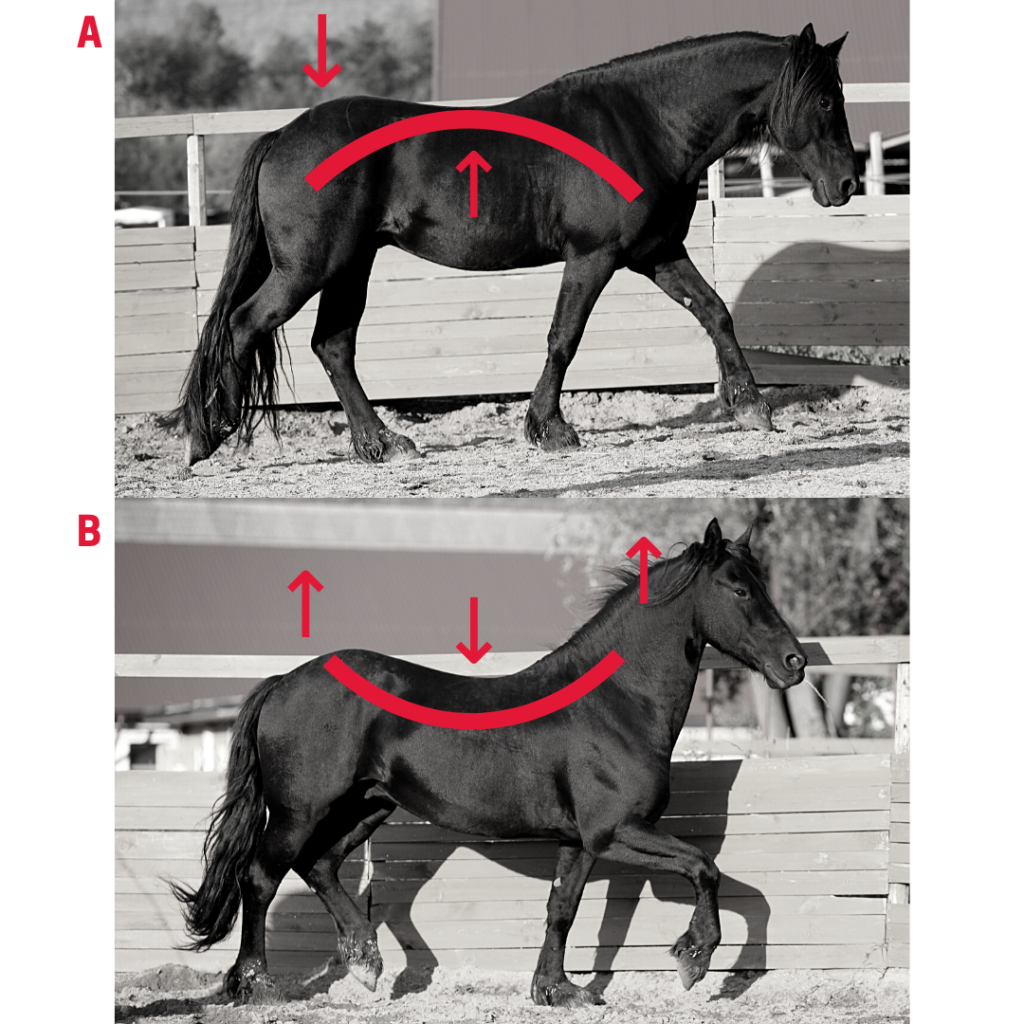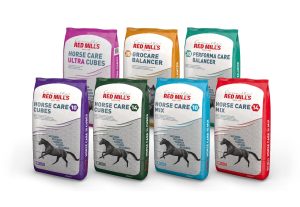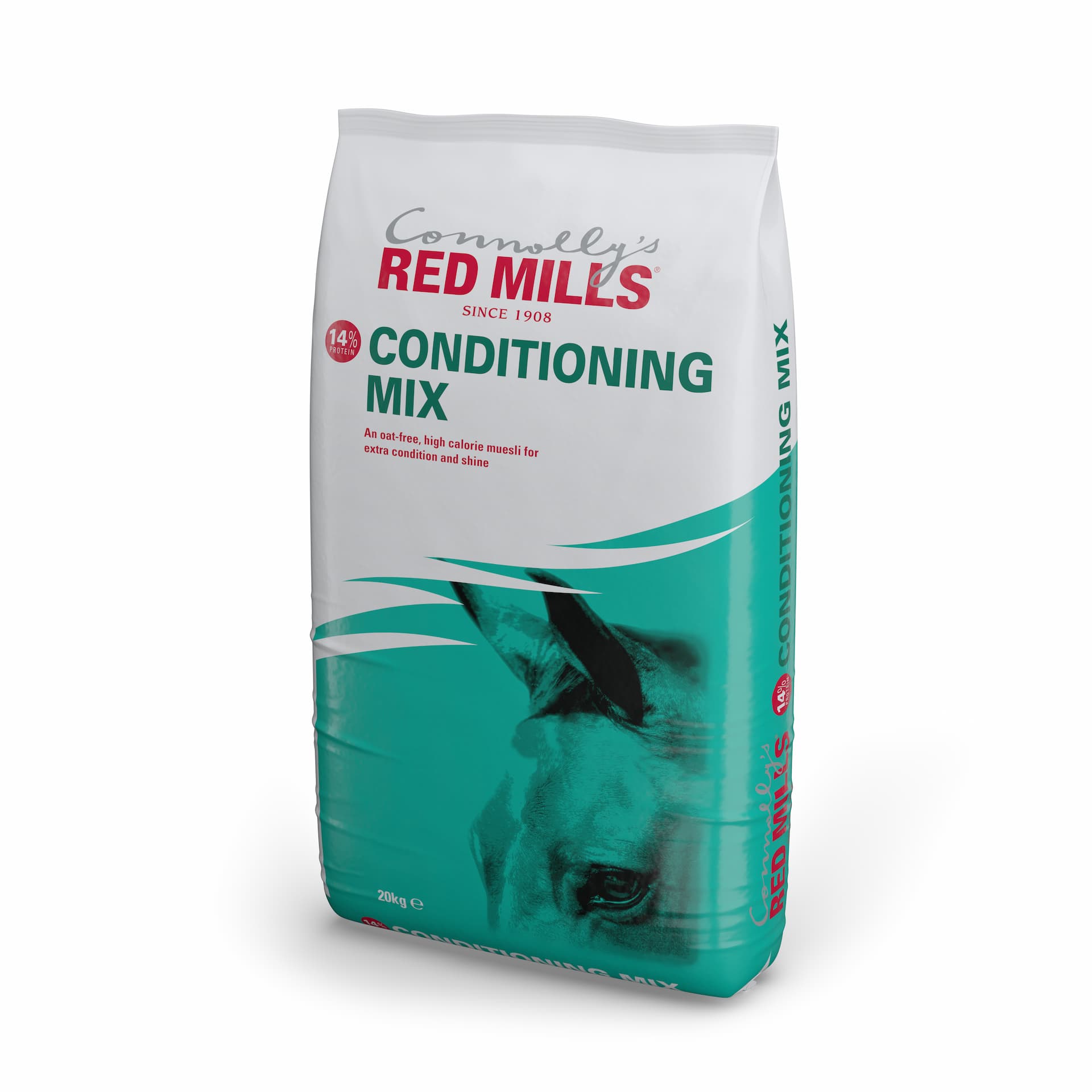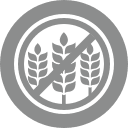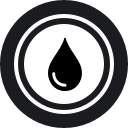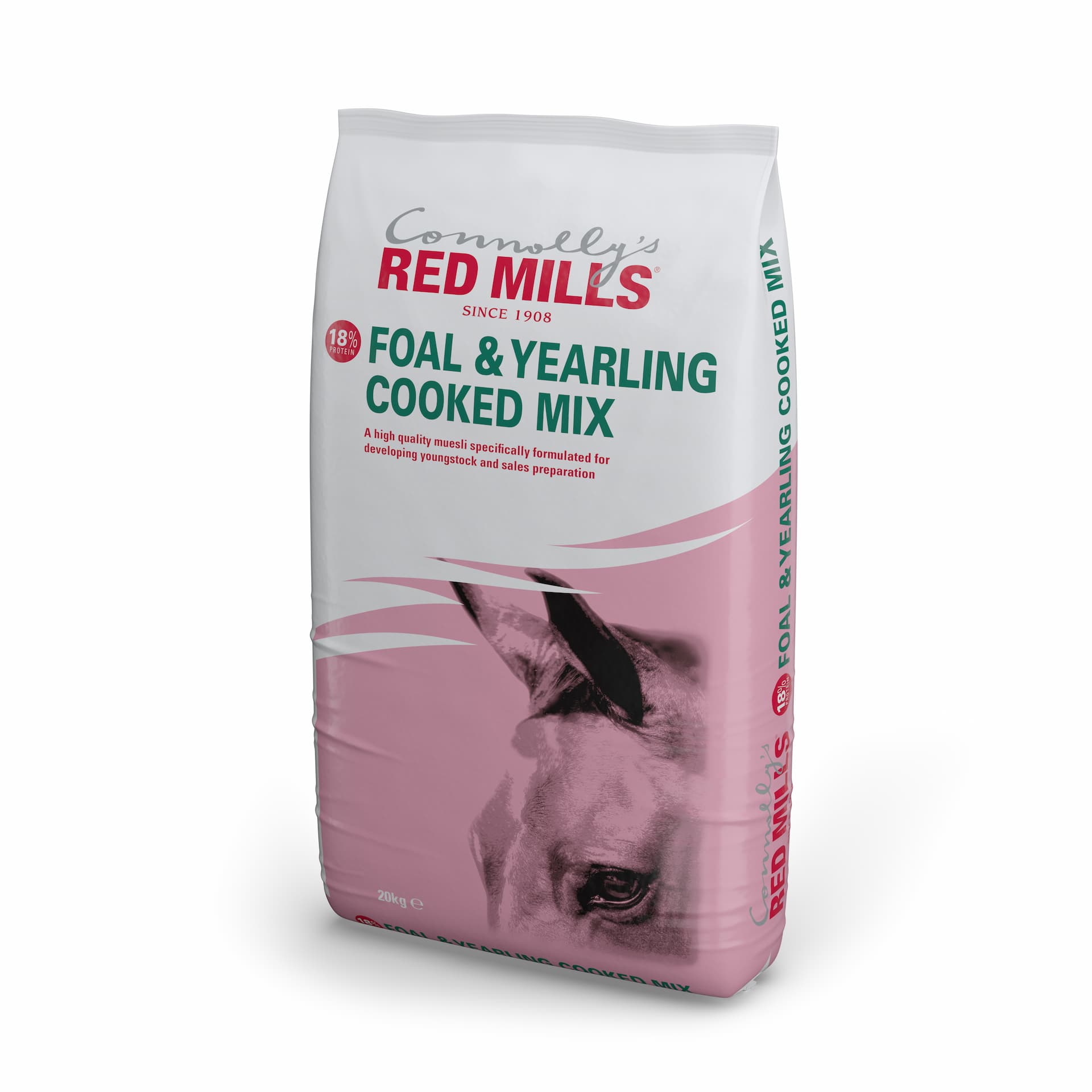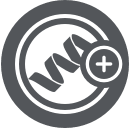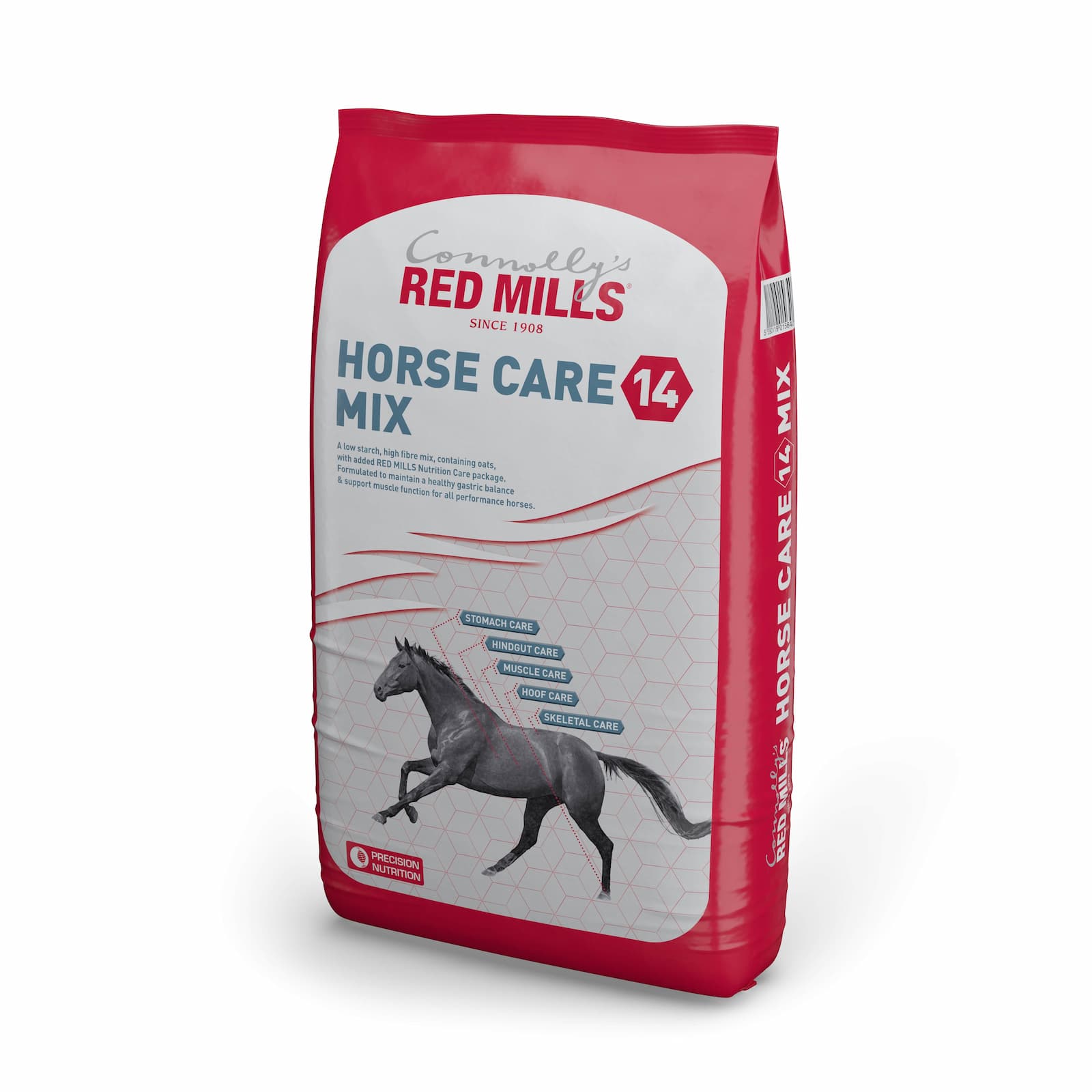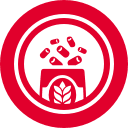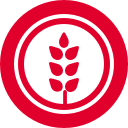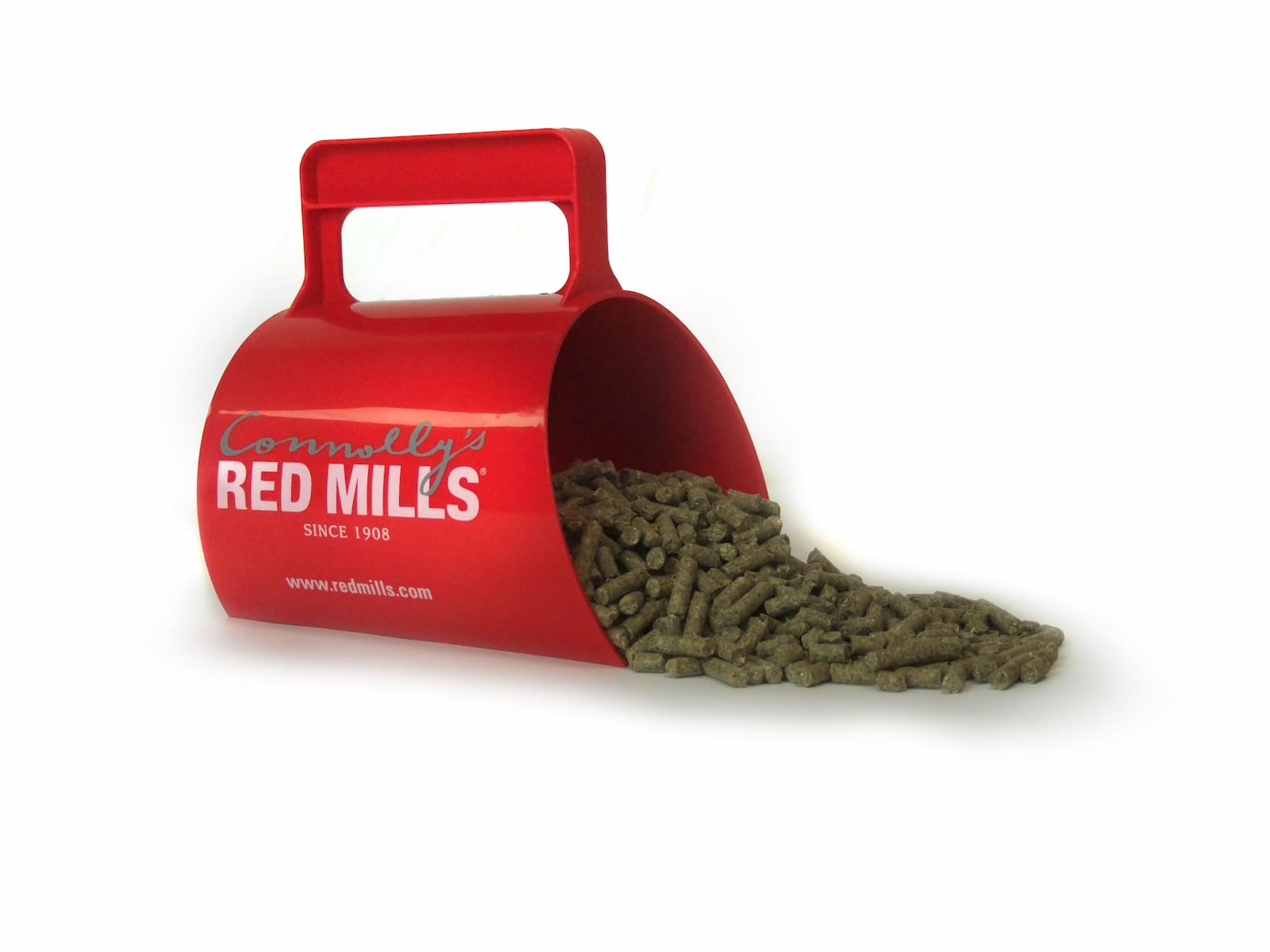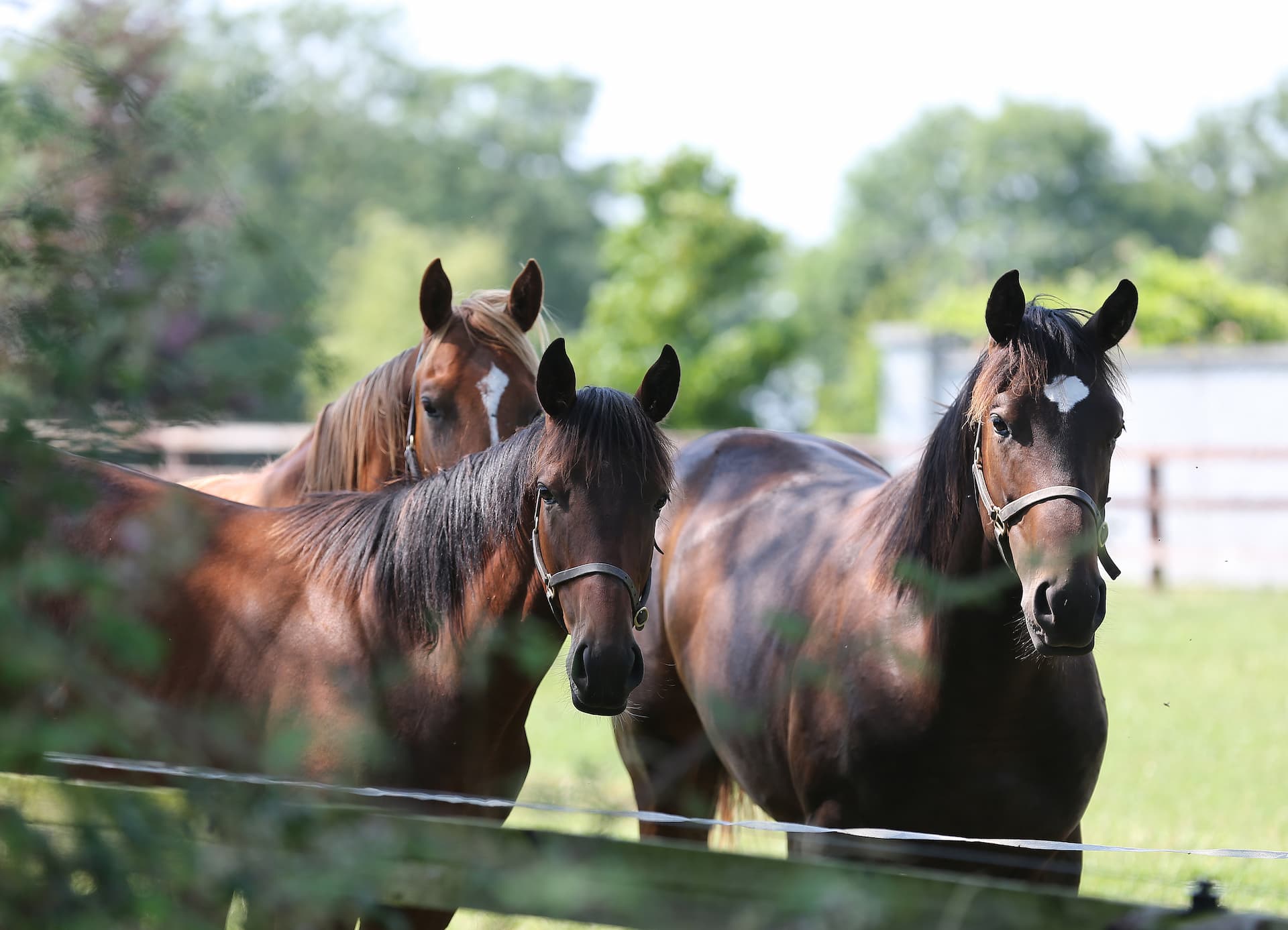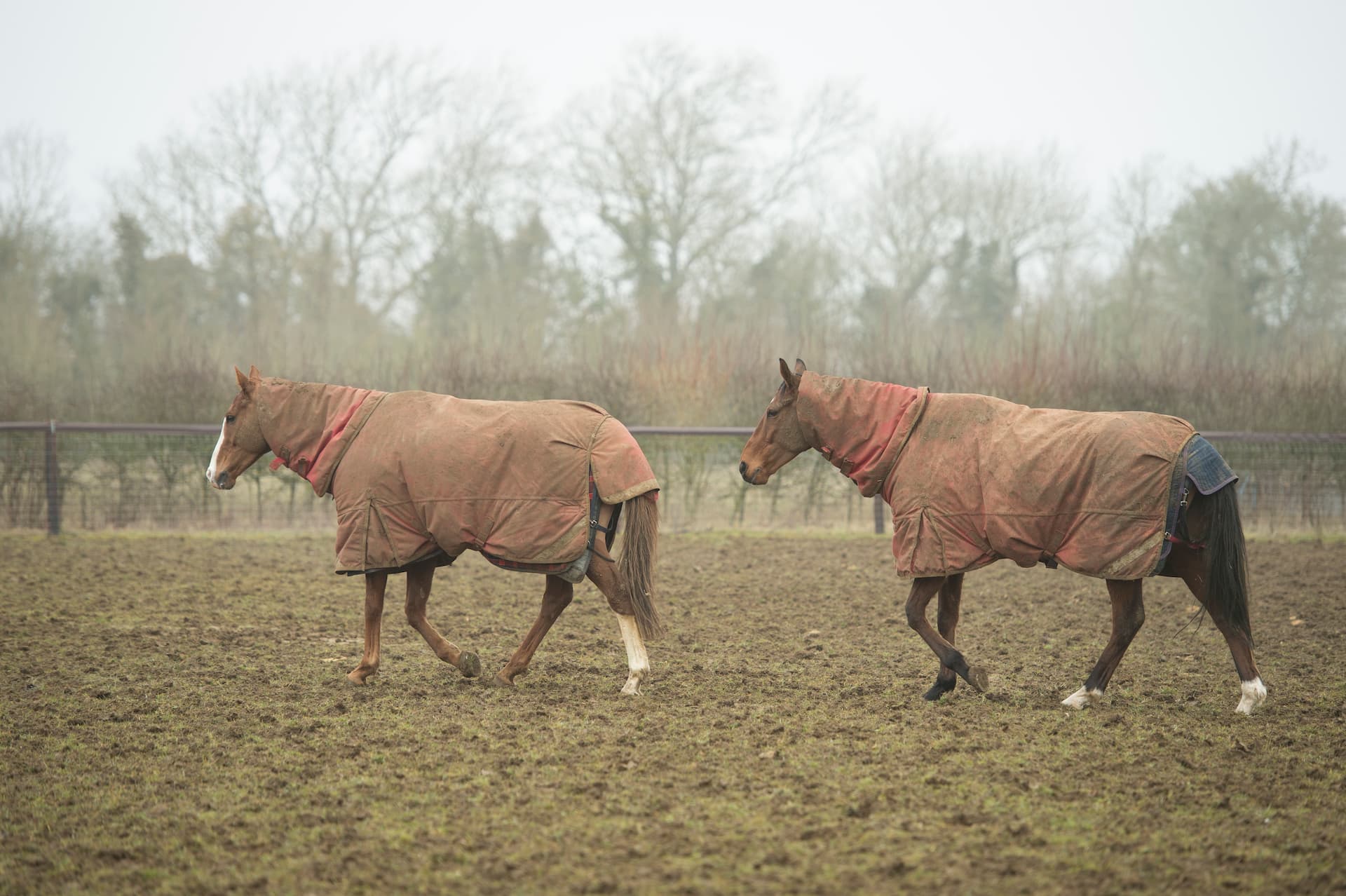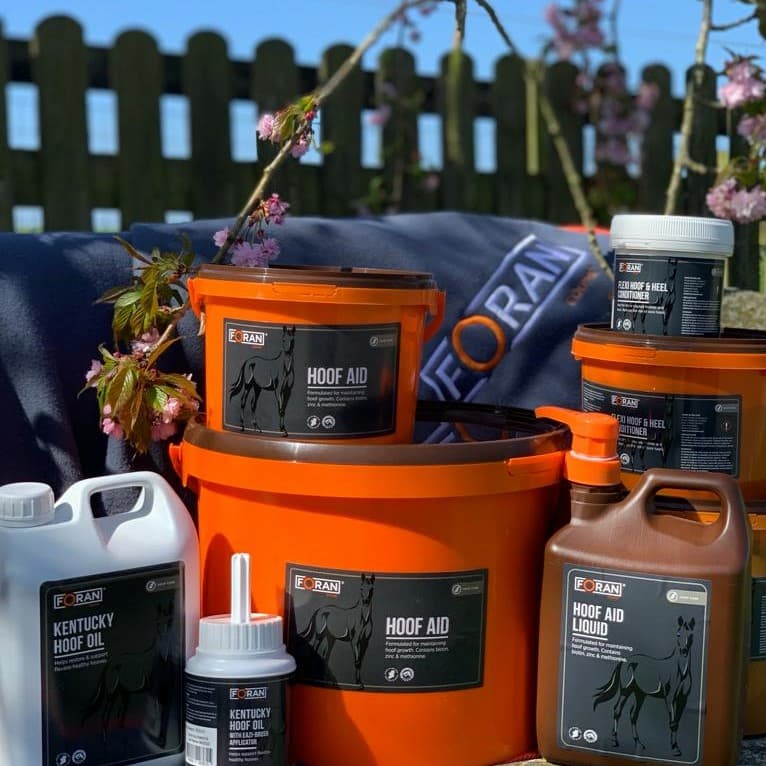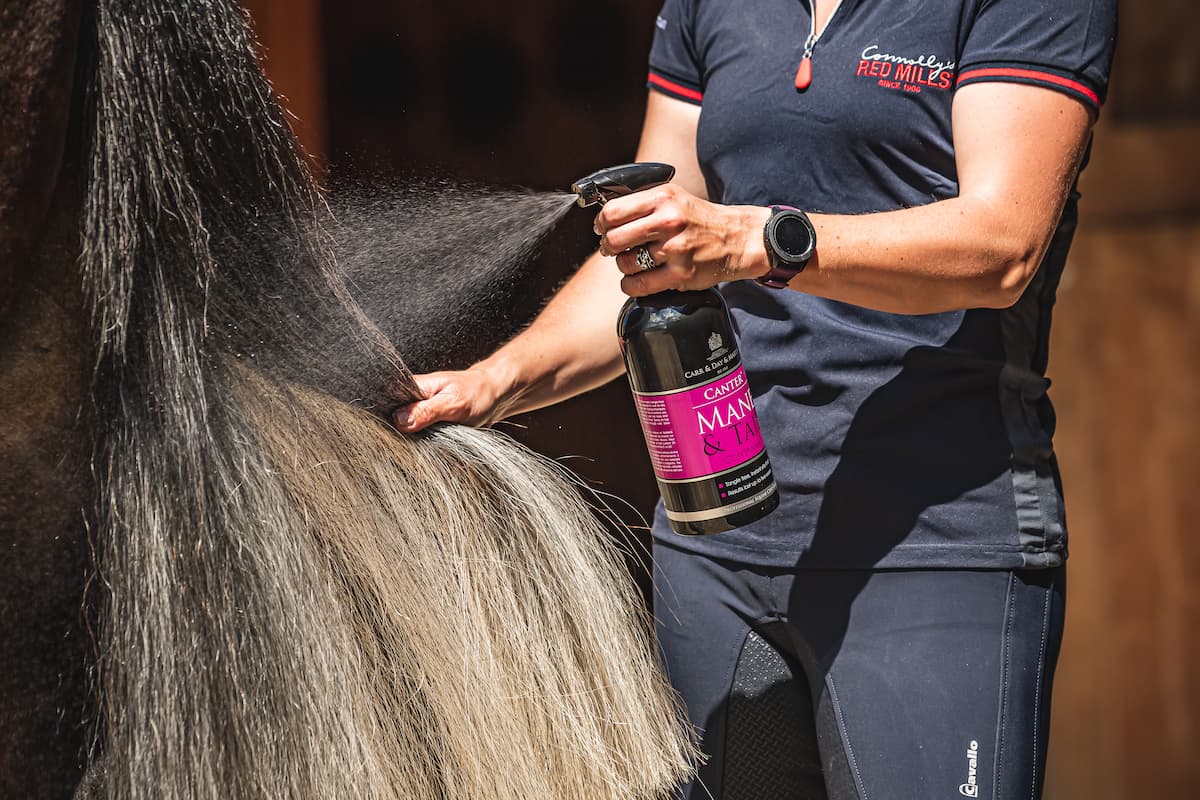May, 2021
Horses, like people, come in all shapes and sizes. We are all familiar with the lean Thoroughbred type with a ‘ewe’ neck, and the chunky cob with a crest like a stallion, however all horses need to BUILD topline.
There could be a number of reasons why your horse is not gaining muscle and topline, not all of which are related to diet. Factors such as ill-fitting saddles, musculoskeletal issues or health problems such as gastric ulcers can all affect how the horse moves and therefore how they develop muscle. Equally, if they are not doing the right level or type of work needed to build muscle tone, regardless of what is being fed, the horse will struggle to achieve a strong outline. From a dietary point of view, it could be that your horse is simply not getting enough calories, that they need a higher protein horse feed or that they need a feed that contains better quality of protein.
With a vast array of horse feeds to help build muscle, protein, and muscle building supplements available, choosing the most appropriate one for your individual horse can be daunting. In this article, we will explain what topline is, how to get it and how diet can help support muscle development.
What is topline and why is it important?
Topline is the term used to describe the musculature that runs from the poll, down the neck, over the back and into the hind quarters. Having a well-developed topline will mean that the horse has developed the muscles they need to have the power to move and jump well. Having good muscle tone and development also helps to improve the horse’s appearance, so they look as athletic as possible.
Muscle vs fat
Topline should not be confused with fat, they are two entirely different tissues and one cannot be turned into another. Some horses, if allowed to, can easily gain excessive weight and fat deposition on the crest of the neck, along the back and hindquarters and this can give the illusion of a well-developed topline. However, unlike muscle fat does not aid your horse’s movement, in fact an overweight horse is likely to be less athletic and tire more quickly. One of the best ways to monitor if your horse is carrying excessive fat is by body condition scoring them regularly body condition scoring here. When body condition scoring your horse, think how different the muscle on your biceps feels verses the wobbly bit under your arm. That is the difference you are feeling for on your horse.
How to get topline?
You might be one of the lucky people who has a horse with a naturally beautiful topline. However, many horses do not have good muscle development and will need some help to build muscle. Whilst a good diet is essential for lots of reasons, diet alone will not give you a perfect outline; to build muscle a carefully considered exercise program is essential.
A typical example of a horse struggling for topline is the racehorse turned riding horse. The difference in riding styles between racehorses and leisure/ sport horses means that the horse will have been used to working in an outline that does not necessarily enhance the development of muscles over the neck and back and they will need a structured exercise program focusing on developing these muscles. Young horses just starting formal training will also often also lack topline. Obviously, all horses mature at different rates so whilst a compact Connemara might have good topline at a young age, a large framed, big boned Warmblood may need additional time to fully mature. Topline can also be affected to some degree by conformation, for example, a horse with a long back may find engaging their hindquarters more difficult.
Building topline does not happen overnight, it takes time and consistent exercise. Again, think about your own body; you do not get a six-pack by doing thirty sit ups, but if you do thirty sit ups every day for a lengthy period of time, along with a healthy balanced diet, your abdominal muscles will become stronger and more defined. Bear in mind that just like humans, when trying to build topline it is essential that during exercise the correct muscles are engaged (Image 1). Furthermore, if your horse is not moving correctly this can result in unwanted muscle development in other areas, for example a horse that constantly has its head in the air will develop muscle under their neck and this will ultimately work against developing a good outline.
Nutrients for topline
A well-balanced diet is crucial for all horses but what are the main nutrients needed for muscle development? Muscle is made mainly from protein and so a diet containing adequate protein is key for muscle development. When choosing what to feed it is not necessarily the figure listed for protein percentage that matters as much as the quality of the protein.
Protein is made up of chains of amino acids. The amino acids build up the protein molecule like building blocks. There are two types of amino acids, essential and non-essential. Non-essential amino acids can be synthesised by the horse and so are not a necessary part of the diet. Essential amino acids, such as lysine and methionine, must be provided in the diet because the horse has cannot manufacture them within the body. These amino acids are described as a ‘limiting amino acid’, as lack of them in the diet will result in limited growth and development. Quality protein is protein that has high levels of these essential amino acids.
Alongside protein/ amino acids, certain vitamins and minerals are also important for muscle health and development. For example, vitamin E and selenium act as antioxidants, which help to protect muscle and reduce damage during exercise, whilst B-vitamins play a role in controlling the rate at which amino acids are used and ensure that proteins are used at an optimal rate that reduces muscle damage. Antioxidants are also involved in red blood cell synthesis, thus help to ensure that plenty of oxygen is carried to the muscles when in work.
When selecting a feed to produce topline it is therefore important to not only look at the crude protein level declared on the back of the bag but also the list of ingredients. A feed designed to help support and promote topline development should ideally contain high quality protein sources such as Soya Bean Meal or Full-Fat Soya and these ingredients should appear high up the ingredients list which is always provided in descending order of inclusion.
Which hard feed to use?
When trying to build up your horse’s topline the hard feed provides an important source of nutrients, but the most appropriate feed will depend on several factors such as your horse age, body weight and their temperament. For example
- Horse on a low protein feed: If you’re on a low protein feed and you’re struggling with muscle and topline, consider moving up to a high or higher protein horse feed; an example would be moving from Cool ‘N’ Cooked to (10% protein) to Conditioning Mix (14% protein). Alternatively, if you would prefer not to change your horse’s feed then top-dressing with a high protein addition such as GroCare Balancer.
- The good-doer: A horse or pony that maintains weight well will generally become overweight if fed a traditional conditioning mix or cube. When feeding the good-doer it is firstly essential to ensure their diet is fully balanced by feeding a concentrated source of protein, essential vitamins and minerals, whilst still limiting calorie intake. This is easily achieved by feeding a nutrient-dense feed balancer such as GroCare Balancer or a multi-vitamin, mineral and amino acid supplement such as Foran Equine Chevinal. Read more about feeding the good doer here Foran Equine Chevinal. Read more about feeding the good doer here. If, after you have ensured the diet is balanced and the horse is doing appropriate exercise, you are still struggling to develop muscle tone then the addition of a muscle-building supplement (see below) can be extremely helpful.
- Youngstock: Young horses need quality protein for growth as well as topline development. For youngstock that are maintaining optimal weight on good-quality forage, a high quality protein, vitamin and mineral balancer such as GroCare Balancer, depending on their age, are ideal. For youngsters needing more calories than a balancer can provide and again, depending on their age, may benefit from a specialist youngstock feed such as Foal & Yearling Cooked Mix.
- The fizzy/ excitable horse: how to make a horse gain weight and muscle when they are prone to becoming overly excitable or fizzy is a common dilemma. However, do not despair, it is possible with our low starch Horse Care feeds. Horse Care 14 Mix is high in calories and protein to aid weight gain and muscle development, yet low in starch (just 15%) so it really is the best feed to put weight on a horse where temperament is a concern. Feeding for Temperament here.
- Underweight horse: A horse that is lean is unlikely to be getting the calories they need to fuel work, maintain weight and at the same time put on muscle. To make the horse gain weight and muscle sometimes just increasing their current feed will achieve the desired results. However, for some horses needing both weight gain and muscle development a specifically formulated conditioning feed is needed. In these situations, we recommend our highest calorie horse feed, Connolly’s RED MILLS Conditioning Mix; we believe it is the best horse feed for weight gain on the market!
- Older Horse: Just like humans, as horse’s age they can suffer from a certain amount of muscle degeneration and have a noticeably reduced muscle development over their topline. In addition, many, but not all, horses in their senior years may not be in as much work as they previously were and this will make building topline in older horses more difficult. Taking into account the fact that some older horses struggle to maintain weight and/or maybe suffering from conditions such as Pituitary Pars Intermedia Dysfunction (PPID), commonly referred to as Cushing’s disease, can mean that they often need a specialist diet. One of the best senior horse feed for weight gain and muscle development is our Horse Care 14 Mix. Not only does it contain our unique Care Package to help support the veteran horse, they are also low in starch and sugar so are suitable for horses prone to or suffering from Cushing’s Disease. Read more about PPID herePituitary Pars Intermedia Dysfunction (PPID)
- Horses suffering from gastric discomfort: Discomfort caused by conditions such as Equine Gastric Ulcer Syndrome can affect how horses carry and use themselves and this, if left unaddressed, can affect their body shape. Where problems such as gastric ulcers are suspected medical treatment and specialist diet and management may be required (insert link). For horses prone to gastric or digestive problems we recommend our Care range of feeds. All the feeds in our Care range have been specifically formulated to be low in starch and contain beneficial ingredients including yeast, the prebiotics MOS and FOS, plus a long-lasting natural gastric buffer, all of which help to support and maintain a healthy stomach and hindgut.
Exercise ok, hard feed ok, what else can you do?
Having gone to the effort of perfecting your horse’s diet and fine-tuning their exercise program, they may still need a little bit of help to get that final bit of topline or maybe you need to speed up the process to meet a deadline of a sale or a show? These types of horses will benefit from some extra support.
A hydrolysed plant protein supplements such as Foran Equine Muscle Prep can be enormously beneficial. Muscle Prep is an innovative liquid muscle-building supplement containing protein that has been pre-digested into amino acids, ready for direct absorption into the body. This readily absorbable, high quality protein is especially useful for horses that struggle to develop or maintain topline. Foran Equine Muscle Prep provides the horse with all 10 essential amino acids they need. It also contains Vitamin E, a powerful antioxidant to support muscle recovery, and B-vitamins, for optimum protein and energy utilisation.
If you are struggling with your horse’s lack of muscle tone or need advice on the correct diet to build topline, our expert team of nutritionists are on-hand to to help you achieve the best results, contact us on get in touch with them here.
Related Products
Contact our sales team via WhatsApp or email

Nicolas Gaumerais
Group Commercial Manager GCC Region
Based in the UAE, Nicolas Gaumerais is the Commercial Manager of Connolly's RED MILLS Group which includes Connolly's RED MILLS horse feeds and Foran Equine supplements sold in the GCC region. Nicholas regularly travels across the Gulf to meet customers.

Dominic Bligh
Group Commercial and Technical Executive GCC Region
Alternatively, reach out to Dominic Bligh who offers nutritional & technical support for Connolly's REDMILLS Feed and Foran Equine supplements. Dominic is also the Commercial Manager for Foran Equine Supplements. He regularly visits client's stables in the Middle East to advise on bespoke feeding programmes.
